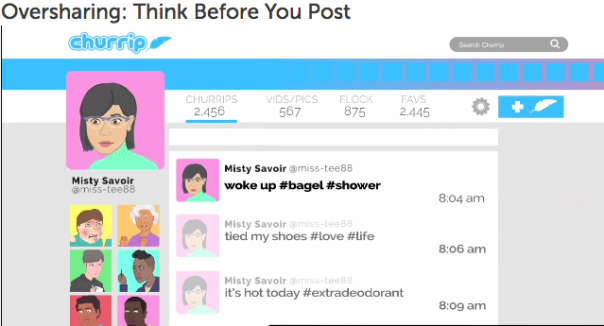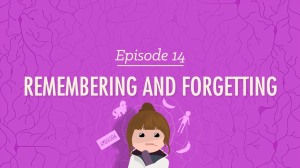At the beginning of this class I took a look at the debate topics and chose one that I felt very strongly about. I fully agreed that people have become too dependent on technology and need to unplug from it at times. Silly me…throughout the class it became increasingly more difficult to stick to my black and white opinion’s about technology. Namely Educational Technology. Through the interactions and listening to everyone passionately debate the importance of technology and digital citizenship, I learned that “The Big T” wasn’t something to fear and become frustrated with. It was something to enjoy, use in moderation, and use to enhance my life, learning, and teaching. So, thank-you! Thank-you to the people who helped open my eyes and give this thing called Tech another chance. I was beginning to loathe laptops and Snapchat until six weeks ago.
I was very impressed with the amount of incredible resources that were shared by both our instructors and colleagues/classmates. There are a few of them that I would like to highlight which were incredibly influential in my new technology perspective.

Number 1: One of the most profound videos we looked at in this class (posted by Alec & Katia) was from Gary Turk, called “Look Up.” This video reminded me that we can miss out on incredible social interactions when we have our noses buried in our phones. This video also made me realize that disconnecting from technology and interacting with others, can help completely change your life path. It is an exciting notion.

Number 2: The second video which had a strong impact on me was “I forgot my Phone” uploaded by Charstarlenetv. This video gave us the powerful images to use in our video presentation on what it is like when you don’t have your phone and others around you (that are supposed to be spending quality time with you) are constantly on your phone. It was amazing to see what the emotional impact can be of being ignored or having other disengage from your time together.

Number 3: Educational technology isn’t Leveling the Playing Field by Annie Murphy Paul.
This article speaks to readers about equity and technology. Annie continually reminds us that technology itself doesn’t close learning gaps and help students in poverty reach academic levels to their peers in high socio-economic neighbourhoods and schools. This article supports what I have been speaking about at my low SES school for many years. We can’t just give kids laptops and assume they are learning. We actually have to TEACH! Love it!

Number 4: Hey parents, stop romanticizing your 1970’s Summer by Jacboa Urist. Jacoba changed my thinking completely when it comes to “the good ol’ days.” He is absolutely right in telling parents and older generations that we do not need to have our kids experience the same activities and things we did as children, but we need to realize that technology is now a part of their childhood, and we need to redefine what a “good childhood” looks like. Although, I still say that every kid needs to experience climbing and falling out of a tree at one point in their lives.
I learned that constantly being connected and feeling the need to post on Social Media, makes me look selfish and egotistical. I have always felt this way, but this class helped to solidify my thoughts. I think it’s incredibly narcissistic to feel the need to plaster your face and life all over the Internet for meaningless likes. It makes me sad as well to think that the self-identity and esteem of youth is so connected to Social Media interactions.
Now I know that Social Media and technology has gotten a bit of a bad rap through this process, but I want to ensure whoever is reading this, that I do not think all technology is bad. I don’t even think Social Media is all that bad. I just think that it has the potential to create problems. Just like abusing food, caffeine, unhealthy exercise, etc. all can be. It comes with moderation and education. And when I say moderation, I don’t mean time lines. I mean using technology when it is appropriate, for enhancing your experiences and learning, and when you are not supposed to be engaging in meaningful time with people who are physically present. Because let’s be honest, Buzzfeed makes some hilarious videos (Men try women’s halloween costumes), but I shouldn’t be watching those videos when I should be playing with my weiner (puppy that is).

Thanks for reading. Have a wonderful summer friends and put down those phones lest you get this guys tan!

Janelle



 Photo Credit:
Photo Credit: 







 Photo Credit: Sana Sattani –
Photo Credit: Sana Sattani –








 It wasn’t so long ago that I was a child (ok, it was a little longer than I like to admit), but there was strict ‘no-videogame” rule in our house. This rule at the time was a horrific error in parenting (or so my brother and I thought), but it was in essence the rule which caused my brother and I to get outside and play. This play lead to finding passions for basketball, skating, street hockey, biking, tree climbing and much more. Not only were we not allowed videogames, but our parents also joined us outside. So it wasn’t a situation where there was a double standard it was out parents that were being positive, healthy role models for their kids. Photo Credit: hacknmod.com
It wasn’t so long ago that I was a child (ok, it was a little longer than I like to admit), but there was strict ‘no-videogame” rule in our house. This rule at the time was a horrific error in parenting (or so my brother and I thought), but it was in essence the rule which caused my brother and I to get outside and play. This play lead to finding passions for basketball, skating, street hockey, biking, tree climbing and much more. Not only were we not allowed videogames, but our parents also joined us outside. So it wasn’t a situation where there was a double standard it was out parents that were being positive, healthy role models for their kids. Photo Credit: hacknmod.com I would also say that the time before current technology was a much happier and active time for me. Now I find myself sitting with my Ipad on my lap playing endless hours of Hay Day instead of going outside and doing the things I used to love as a kid. It isn’t that Hay Day is so completely engaging that I can’t break my concentration, it’s just that in a fast paced work world, I find technology the gateway to feeling like I’m doing something, when really I’m just creeping all my friends pictures of Facebook.
I would also say that the time before current technology was a much happier and active time for me. Now I find myself sitting with my Ipad on my lap playing endless hours of Hay Day instead of going outside and doing the things I used to love as a kid. It isn’t that Hay Day is so completely engaging that I can’t break my concentration, it’s just that in a fast paced work world, I find technology the gateway to feeling like I’m doing something, when really I’m just creeping all my friends pictures of Facebook.




 Technology in the classroom is not a new concept as Greg Toppo suggested in his TedX Talk
Technology in the classroom is not a new concept as Greg Toppo suggested in his TedX Talk  Photo credit:
Photo credit: 


 seeing the light at the end of the tunnel. My experience coming back to school has been incredibly wonderful and exhausting all at the same time. My husband explains to people that he will get to meet his wife again by December 2016 when I am scheduled to finish my last class.
seeing the light at the end of the tunnel. My experience coming back to school has been incredibly wonderful and exhausting all at the same time. My husband explains to people that he will get to meet his wife again by December 2016 when I am scheduled to finish my last class.